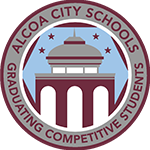Key Benefits of Rich Text Formatting:
-
Improved Readability:
- Headings and Subheadings: Clearly organize your content with headings and subheadings, making it easier for readers to navigate and understand the structure.
- Bullet Points and Numbered Lists: Use bullet points and numbered lists to present information in a concise and organized manner.
- Font Styles: Choose appropriate font styles (e.g., serif for body text, sans-serif for headings) to enhance readability and visual appeal.
-
Enhanced Clarity:
- Bold and Italic: Highlight important words or phrases using bold and italic formatting for emphasis.
- Color Coding: Use color coding to differentiate between different categories or ideas.
- Text Highlighting: Highlight specific sections of text to draw attention to key points.
-
Visual Appeal:
- Alignment: Align text left, right, centered, or justified to create a visually pleasing layout.
- Spacing: Adjust line spacing and paragraph spacing to improve readability and overall appearance.
- Images and Graphics: Incorporate images and graphics to break up text and enhance visual interest.
Practical Examples of Rich Text Formatting:
- Creating a Report: Use headings, subheadings, bullet points, and numbered lists to organize your report and make it easier to follow.
- Writing an Email: Use bold and italic formatting to emphasize important information and improve readability.
- Designing a Presentation: Use a combination of formatting options, including headings, bullet points, images, and color coding, to create a visually appealing and informative presentation.
By effectively using rich text formatting, you can create more engaging, informative, and visually appealing content that resonates with your audience. Remember, the goal is not to overuse formatting, but to use it strategically to enhance your message and improve the overall reading experience.
